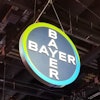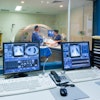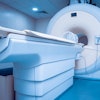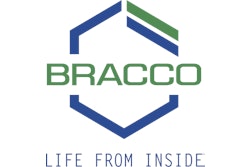The incidence of nephrogenic systemic fibrosis (NSF) in the U.S. following administration of gadolinium-based contrast agents (GBCA) is falling as healthcare providers restrict the use of MRI contrast in at-risk patient populations, according to an advisory panel meeting convened on Tuesday to discuss U.S. Food and Drug Administration (FDA) regulation of the products.
The day-long forum was convened to help craft recommendations to minimize NSF risk, differentiate the risk of NSF between contrast products, and give guidance on labeling and other risk-reduction methods. The meeting was held in Gaithersburg, MD, and was hosted by the FDA's Cardiovascular and Renal Drugs Advisory Committee (CRDAC) and Drug Safety and Risk Management Advisory Committee.
No votes were taken on action regarding changes to existing gadolinium contrast regulation, though part of the panel discussion focused on whether additional warnings or contraindications should be included on all gadolinium contrast labels, or only those contrast agents that have been associated with the greatest number of NSF cases.
GBCA contraindications
Dr. Robert Harrington, chair of the CRDAC, said his interpretation of the discussion was that the majority of the panel "suggests that there should be a contraindication for at least two" gadolinium contrast products. The panel also wants to gather more data on the potential effect of cumulative gadolinium doses on patients.
The morning session was reserved for statements from contrast manufacturers. Bayer HealthCare Pharmaceuticals of Wayne, NJ, offered research and efficacy details for its Magnevist product, followed by Bracco Diagnostics of Princeton, NJ, providing data on its gadobenate dimeglumine products MultiHance and ProHance.
GE Healthcare of Chalfont St. Giles, U.K., was third to present on behalf of Omniscan, followed by Covidien of Dublin, Ireland, showing evidence on Optimark. Finally, Lantheus Medical Imaging of North Billerica, MA, spoke of its MR angiography contrast agent Ablavar.
In its review of gadolinium contrast use, the FDA cited statistics from market research firm IMS Health of Norwalk, CT, that found total sales of gadolinium-based contrast agents decreased from 8.5 million vials in 2005 to 7.7 million vials in 2008.
Contrast utilization
The majority of sales in 2008 were for Bayer's Magnevist (3.9 million vials or approximately 50% of the market), followed by GE's Omniscan with the sale of 1.5 million vials in 2008 (down from sales of 3.4 million vials in 2006). Sales of Bracco's MultiHance's totaled 1 million vials in 2008 (up from 98,000 vials in 2005). Covidien's Optimark and Bracco's ProHance remained relatively consistent in sales from 2005 to 2008.
The majority of sales were to hospitals, according to Dr. Grace Chai from the FDA's Office of Surveillance and Epidemiology.
Reports of NSF cases began arriving at the FDA in 2006, the same year the agency issued its first public health advisory on the possible connection between gadolinium contrast and NSF. In 2006, 70 cases were reported. By 2007, the total increased to 286, and it nearly doubled to 557 cases in 2008. In 2009, as of September 3, there is a downward trend, with 223 cases reported.
The FDA also tallied event dates, defined as the first day a GBCA was administered to a patient or the day of NSF diagnosis. There were 194 event dates in 2006, 128 event dates in 2007, 55 event dates in 2008, and only six in 2009, as of September 3.
Downward trend
"This [trend] probably reflects awareness of the medical community about the potential connection between GBCA administration and NSF and changes in radiologic practice," said Dr. Jim Kaiser from the Office of Surveillance and Epidemiology.
The FDA also calculated the number of NSF cases in which one brand of GBCA was identified. Omniscan was cited in 383 cases, followed by Magnevist with 195, Optimark with 35, and MultiHance with one case. There were no U.S. NSF cases associated with ProHance in the single-source analysis.
In those NSF cases, Kaiser said there was "no tendency for NSF to affect one sex preferentially" and the median age of patients (early 50s for both men and women) "was not remarkably different among the various products, as cases occurred in patients with a wide range of ages."
In a summary of research on the connection of gadolinium contrast and NSF, Kaiser told the gathering, "Current epidemiological studies in the literature were inadequately designed to provide data to evaluate if the risk of NSF varied across GBCA products. However, the data from these studies does not exclude the possibility of differential risk among these products."
Vendor presentations
In their presentations, gadolinium contrast manufacturers took to the podium to cite previous research that found no definitive link between gadolinium contrast and NSF other than with high-risk patients.
In its submission to the FDA, Bracco noted that as of October 26, the company had received no reports of unconfounded cases of NSF following the sole administration of MultiHance. Overall, Bracco was aware of 14 confounded reportable cases for which it appears MultiHance was identified as the GBCA used. For ProHance, there were 19 cases (17 confounded and two unconfounded) which appeared to be linked to NSF.
"There are no unconfounded cases from the literature and no cases of NSF from phase IV postmarket requirements," Dr. Alberto Spinazzi, Bracco's senior vice president for worldwide medical and regulatory affairs, told the panel. "Of course, extreme caution should be used when using gadolinium-based contrast agents, but based on the available evidence, we, Bracco, do not believe that more restricted measures are needed for MultiHance as a contraindication of the agent."
In its filing to the panel, GE Healthcare noted that over the past three years, the company has conducted numerous studies to determine the cause of NSF. "Even after conducting multiple well-designed nonclinical studies, it has proven challenging to clearly differentiate factors that relate to or predict NSF outcome based on in vitro and in vivo data," the document stated.
GE currently is conducting a postmarket clinical trial (GE-041-075) in patients with renal impairment to assess the magnitude of the risk of NSF in this patient population.
Package labeling
To help prevent NSF, Covidien revised its package labeling to contraindicate the use of Optimark specifically for patients with acute or chronic severe renal insufficiency or acute renal insufficiency of any severity due to the hepato-renal syndrome or in the perioperative liver transplant period.
Dr. Herbert Neuman, chief medical officer for Covidien, said the changes in clinical practice have reduced the incidence of NSF. "We have reinforced this progress by contraindicating the use of Optimark in the defined at-risk population," he told the panel. "Based on current knowledge, the same contraindication should be applied classwide."
Optimark is indicated for use with MRI in patients with abnormal blood-brain barrier or abnormal vascularity of the brain, spine, and associated tissues, and provides contrast enhancement and visualization of lesions with abnormal vascularity in the liver in patients who are highly suspect for liver structural abnormalities on CT.
No clear picture
Dr. Christiane Pering, head of global medical affairs for diagnostic imaging at Bayer, told the panel that the company agrees with the FDA that "none of the individual data sources provide an unambiguous, clear picture as to the fundamental question of differential NSF risk among the marketed gadolinium agents."
She added that labeling and communications "are expected to appropriately describe all the major risks of gadolinium agents, not solely related to NSF."
In the case of Lantheus' Ablavar, the MR angiography contrast agent has been approved for use in 38 countries around the world. It also has been cleared by the FDA for use in the U.S. and currently is pending release. In its clinical safety study, Ablavar caused no NSF cases among 1,676 subjects.
"We are comfortable with the current labeling of this agent in particular, which discourages use of these agents in the severe renal population," said E. Kent Yucel, professor of radiology at Tufts University in Boston, representing Lantheus. "There simply hasn't been enough experience with this or any other agent to assess the safety in that severe renal population, but it still permits doctors appropriate risk-benefit adjustments in specific patient case."
By Wayne Forrest
AuntMinnie.com staff writer
December 9, 2009
Related Reading
FDA meeting to review NSF and gadolinium MRI contrast link, November 24, 2009
Covidien to modify Optimark labeling, November 9, 2009
MRI contrast media switch eliminates NSF cases, October 15, 2009
Mayo study finds few serious reactions to CT and MRI contrast, September 21, 2009
Gadolinium-based contrast agents alone don't cause NSF, study finds, July 8, 2009
Copyright © 2009 AuntMinnie.com


.fFmgij6Hin.png?auto=compress%2Cformat&fit=crop&h=100&q=70&w=100)





.fFmgij6Hin.png?auto=compress%2Cformat&fit=crop&h=167&q=70&w=250)











